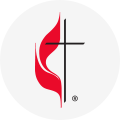Especially around this time of the year, we are asked, “What do churches get from paying apportionments?” That is not a question specific to North Carolina but is one that is asked throughout the United Methodist family. When church members ask this of pastors, district superintendents, and conference staff, they may be hoping for an answer in a dollar amount so that they could compare that to the church’s apportionment payments and maybe calculate some return on investment figure. An article was published not too long ago by one of our sister annual conferences that provided some explanation of what a church gets back. I found the explanation helpful and have adapted that article to share this information with you.
So – what do churches get back from paying apportionments? I sometimes wish I could give a specific dollar amount answer because it is what I’m trained to do—measure and account for financial transactions. But participation in paying apportionments is not just a “get this for that” financial transaction. It is an element of a connectional system that was established by John Wesley in the very early days of Methodism.
Since Wesley’s time, giving has been both local and connectional (beyond each local church), and was understood as a corporate or community responsibility that allowed every member of whatever means to participate. This joint stewardship has always been understood as a way of undergirding organizational needs in ministry, church expansion, and, later, pension support for clergy.
Nevertheless, the connectional system—including apportionments—provides to churches many benefits, even those that can’t be measured in dollars and cents. Since, as treasurers, we grow almost as fond of making lists as of working with columns of numbers, here is a list of answers to, “What does my church get from paying apportionments?”
- Training, credentialing, appointing, and supervising clergy in education through the conference board of ordained ministry, the district superintendency, and Ministerial Education Funds.
- Moving expenses for pastors changing appointments and retiring local pastors and elders.
- Information, resources, and training for clergy and lay leadership.
- Pension payments for pastors’ years of service prior to 1982, funded through the Past Service Liability special apportionment.
- A significant portion of pension benefits for retired clergy, covered from the earnings from long-term management of funds restricted for pension use.
- Retired clergy health care to supplement Medicare.
- Grants for projects that help churches reach neighbors and increase spiritual vitality.
- A conduit and system that enables churches to pool their resources toward mission projects around the world and at home—projects that no single church could do alone.
- Infrastructure that ensures 100 percent of gifts to Advance Specials, United Methodist Committee on Relief, Imagine No Malaria, Love Offerings, Special Sundays and many others benefits the desired mission or ministry.
- New faith communities popping up all over North Carolina. Almost every church in our conference was started with financial and other support from the annual conference and/or “mother churches.”
- The Ministerial Education Fund – assisting seminary students during their schooling and active clergy with continuing education.
- Support for the Media Center, which makes available curricula, small-group study books and videos, stewardship training tools, Bible studies, Christian education resources, and much more.
- Partial support for the NC Conference Camping and Retreat Ministries, which helps young and old meet Christ in creation and among supportive community.
- Campus ministry units to keep and encourage college students in their love of God and service to Christ when they are in school.
- Staff and other support for youth events.
- Administration of a loan program to assist churches with financing for building and remodeling projects.
- Print, internet, and social media that provide a contact point for North Carolina United Methodists and anyone seeking a nearby United Methodist Church or information about the United Methodist Church in our conference, the nation, and the world.
- Conference entities monitor and support cultural inclusiveness in the increasingly diverse mission field that is North Carolina.
- Coaching and consultation services to assist local churches and pastors in growing in discipleship as a community in love with God.
All of these things and more were part of the apportioned budget that clergy and lay people from all North Carolina United Methodist congregations approved during the annual conference session. Voting on the budget at annual conference session is more than approving some numbers on paper or approving a goal that we expect someone else to meet. It is also a vote by every clergy and every lay member to support the budget in their own church.
Annual conference session ended in June, and remittances on 2012 apportionments end on January 16 – but work continues in every local church through sharing information about the apportionment and planning for and encouraging full payment of apportioned funds.
Christine
*Adapted from an article from the Minnesota Annual Conference.
